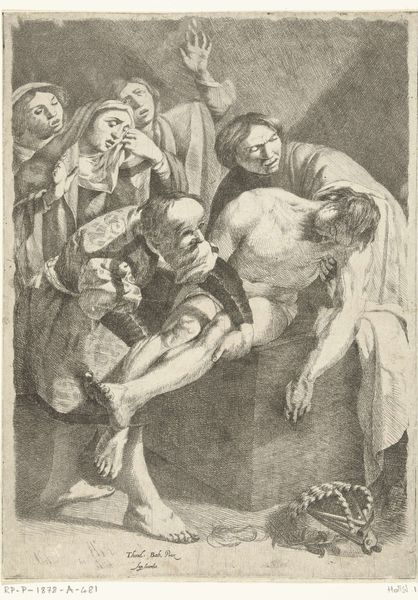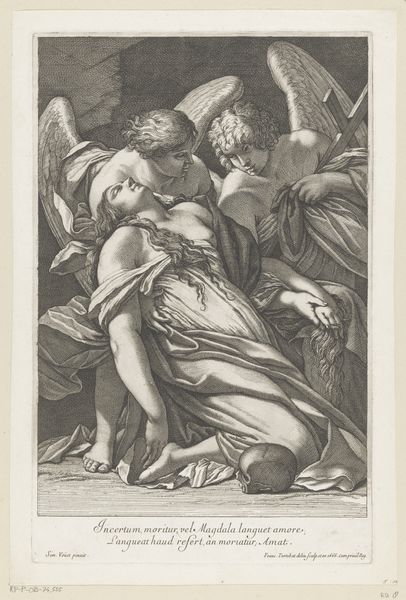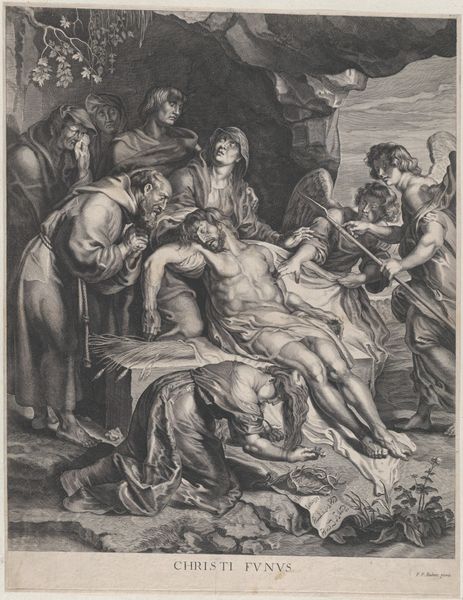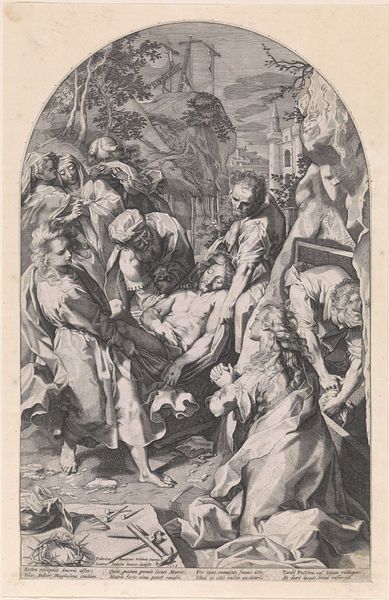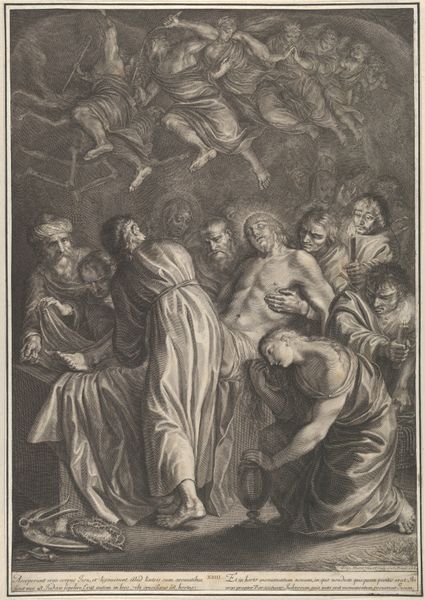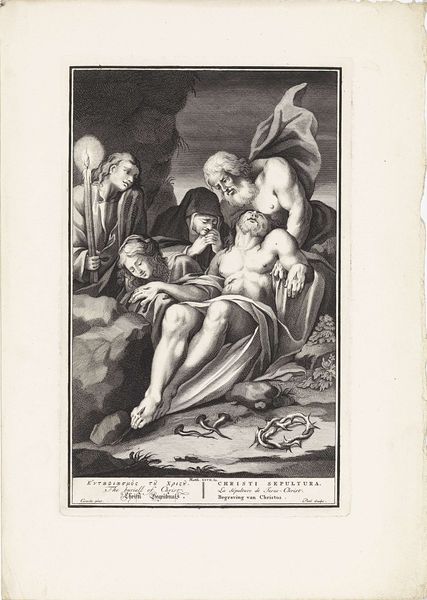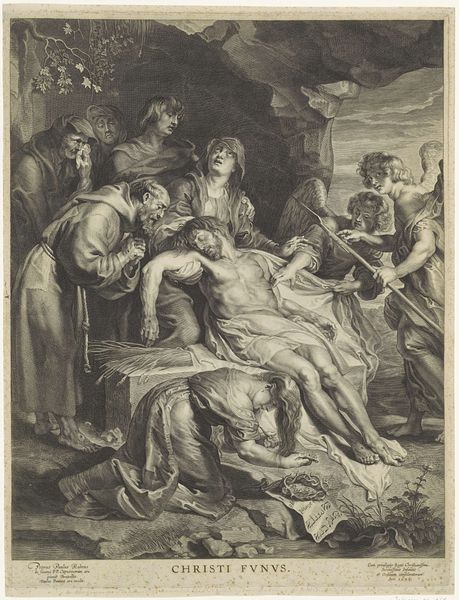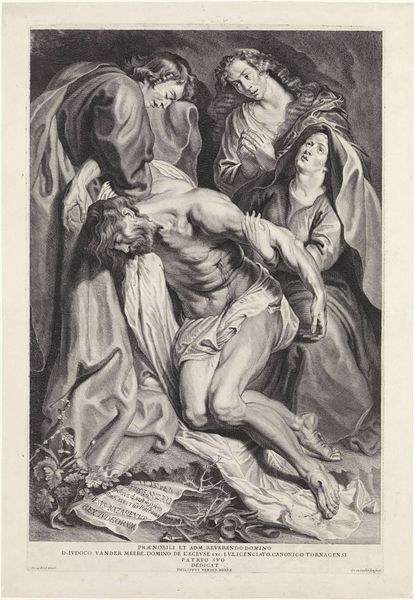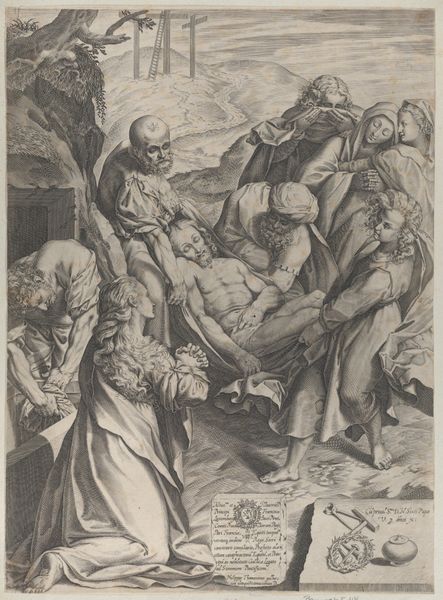
Dimensions: height 460 mm, width 319 mm
Copyright: Rijks Museum: Open Domain
Curator: Well, this print certainly has a lot to say. My initial impression is a blend of melancholy and, dare I say, a slightly theatrical flair. It's like a scene lifted straight from a rather dramatic Baroque opera. Editor: Exactly. What we’re looking at is "Death of St. Francis" attributed to Pierre François Basan. Though, to be fair, it’s after a design by another artist. Basan worked his magic somewhere between 1733 and 1797 and it’s now housed here at the Rijksmuseum. Curator: What really pulls me in is the skull clutched by St. Francis. The skull is not just a reminder of mortality, but an embrace of it, a serene acceptance. Then there are the angels, of course, arranging the crown of thorns almost like stagehands preparing a martyr for his final curtain call. Editor: Yes, those angels... they're draped and styled according to classic allegory. It reminds me of earlier Renaissance and Baroque visualizations. What stays is the human longing to see the transition from this earthly existence to the next framed as beautifully and benevolently as possible. The image offers viewers not just narrative closure but emotional resolution, too. Curator: You've hit on something profound there. Resolution. That yearning is part of the draw of religious iconography as a whole isn’t it? It reminds me of visiting my grandmother in her old house, her collection of similar depictions acting as emotional placeholders of a sort. Visual mantras, if you will. I imagine such pieces offer much solace. But what do you make of St. Francis's upturned eyes? Editor: Oh, they are completely spellbinding. The upward gaze—a universal gesture representing divine connection or visionary experience. It creates an almost direct path from the body to the heavens, circumventing the grim reality of the skull. That’s where a certain caricature can be found too. But ultimately? It's about transporting the soul beyond the physical pain. Curator: Right! And the detail...the subtle gradations in the engraving capture the folds of St. Francis's robe and the softness of the angels' skin beautifully, adding layers of depth and texture. It transforms what could be a straightforward religious scene into a study of light and shadow, making the divine tangible, or at least… more imaginable. Editor: A thoughtful take that underscores, really, the image’s inherent tension. The dance between symbolism and skill speaks not only to artistry but also to how we perpetually attempt to frame life’s major passages with meaning, memory, and, let's face it, more than a little theatricality. Curator: Indeed. A rich little piece that invites a moment's contemplation of faith, art, and the final act we all must face. Editor: Quite so. It proves yet again the eternal allure—and utility—of powerful imagery when staring down those existential questions.
Comments
No comments
Be the first to comment and join the conversation on the ultimate creative platform.
